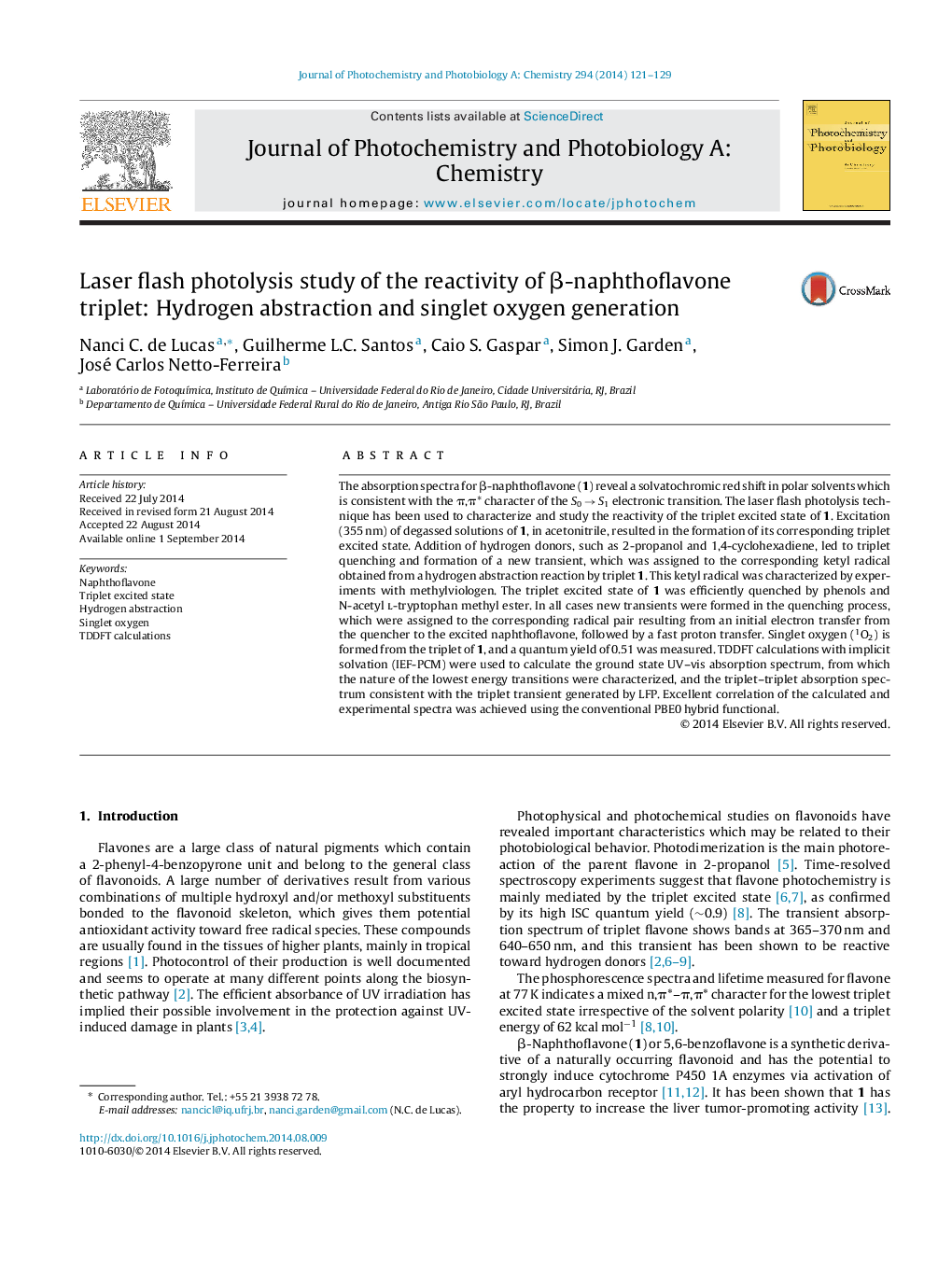| Article ID | Journal | Published Year | Pages | File Type |
|---|---|---|---|---|
| 26144 | Journal of Photochemistry and Photobiology A: Chemistry | 2014 | 9 Pages |
•The triplet excited state of β-naphthoflavone (1) was studied by LFP.•The triplet excited state of 1 was efficiently quenched by hydrogen donors.•The triplet excited state of 1 is less reactive than α-naphthoflavone (2) triplet.•Efficient singlet oxygen formation was measured for 1.•TDDFT calculations with implicit solvation (IEF-PCM) were used to calculate the ground state UV–vis absorption spectrum.
The absorption spectra for β-naphthoflavone (1) reveal a solvatochromic red shift in polar solvents which is consistent with the π,π* character of the S0 → S1 electronic transition. The laser flash photolysis technique has been used to characterize and study the reactivity of the triplet excited state of 1. Excitation (355 nm) of degassed solutions of 1, in acetonitrile, resulted in the formation of its corresponding triplet excited state. Addition of hydrogen donors, such as 2-propanol and 1,4-cyclohexadiene, led to triplet quenching and formation of a new transient, which was assigned to the corresponding ketyl radical obtained from a hydrogen abstraction reaction by triplet 1. This ketyl radical was characterized by experiments with methylviologen. The triplet excited state of 1 was efficiently quenched by phenols and N-acetyl l-tryptophan methyl ester. In all cases new transients were formed in the quenching process, which were assigned to the corresponding radical pair resulting from an initial electron transfer from the quencher to the excited naphthoflavone, followed by a fast proton transfer. Singlet oxygen (1O2) is formed from the triplet of 1, and a quantum yield of 0.51 was measured. TDDFT calculations with implicit solvation (IEF-PCM) were used to calculate the ground state UV–vis absorption spectrum, from which the nature of the lowest energy transitions were characterized, and the triplet–triplet absorption spectrum consistent with the triplet transient generated by LFP. Excellent correlation of the calculated and experimental spectra was achieved using the conventional PBE0 hybrid functional.
Graphical abstractFigure optionsDownload full-size imageDownload as PowerPoint slide
